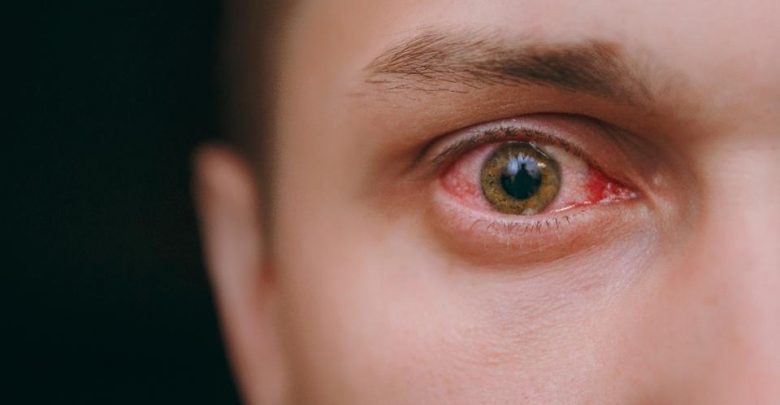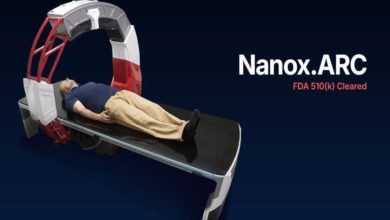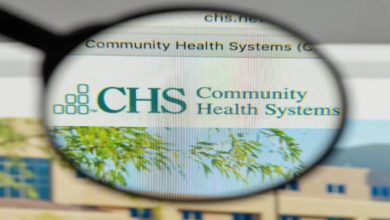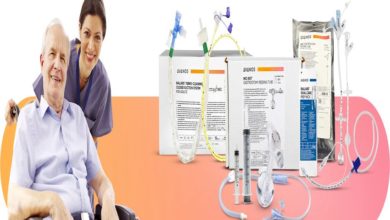These Eye Problems Could Be Symptoms Of COVID-19 Coronavirus

Looks like the eyes may have it. You know those round things that sit below your forehead and you use to “wink and gun” at people? Well, add them to the growing list of body parts that may be affected by the COVID-19 coronavirus. A study recently published in JAMA Ophthalmology found that 31.6% of 38 consecutive patients with COVID-19 seen at the Yichang Central People’s Hospital in Hubei Province, China, had eye-related symptoms.
Now this study did have a number of limitations, which will be discussed later. So take any findings from the study with an Ariana Grande cup of salt. Nevertheless, the findings do add to the growing body of evidence that the “windows to your soul” could also be “windows for the severe acute respiratory syndrome coronavirus 2 (SARS-COV2).” And as you’ll see, this does have various implications.
A team from China Three Gorges University (Ping Wu, MD, Chunhua Luo, MD, Qiang Liu, MD, Xingguang Qu, MD, and Liang Liang, MD) and Sun Yat-Sen University (Fang Duan, MD, and Kaili Wu, MD) conducted the study. The study was actually a case series of patients who were treated from February 9 to 15, 2020. So it wasn’t a random sample, didn’t include the widest diversity of patients, and didn’t have a control population for comparison.
Of the 12 patients in the study with eye issues, seven had epiphora. Not euphoria, which would be something completely different, but epiphora. Epiphora is excessive tear production. We’re not talking “did Rose just have to let Jack go in the movie Titanic” tear production, but rather an abnormal overflow of tears to the point that they are streaming down your face. If your significant other has epiphora when you flash him or her an “I heart you” sign, you may want to contact a doctor. Epiphora results when either your lacrimal glands produce an unusually large amount of tears or your tear ducts are blocked by inflammation, preventing proper drainage. For one of the patients in the study, epiphora was actually the first symptom of COVID-19 that the patient had noticed.

Eight of the patients had chemosis, which is inflammation and swelling of your conjunctiva. Your conjunctiva is the transparent lining that covers the front of your eyeball and the inside of your eyelids. Normally, you shouldn’t be able to see your conjunctiva, unless you have super-vision or are exceedingly small and can see the very fine blood vessels that course through your conjunctiva.
Three had conjunctival hyperemia, which is increased blood flow to your conjunctiva causing them to appear red. And seven of the patients had eye secretions. None of patients had experienced blurring of their vision though.
Now 38 patients is by no means a large number of patients. It is barely more than the cast of Stomp. And it isn’t clear from the publication what medical conditions these patients may have had before becoming infected with SARS-CoV2.
Plus, even though the study authors characterized the eye findings as “ocular manifestations consistent with conjunctivitis,” the American Academy of Opthlamalogy (AAOS) wasn’t so sure if all of these study findings actually represented conjunctivitis, which is a medical term for an infection of the conjunctiva. The AAOS postulated on their website that the eye findings such as chemosis could have instead represented “fluid overload” in critically ill patients. “Fluid overload” is a common phenomena in patient’s experiencing heart or kidney failure. When these organs aren’t able to maintain the necessary delicate balance of fluids, fluid tends to accumulate in different parts of the body including potentially the eyes. Of the 12 patients with ocular findings, four were moderately ill, two were severely ill, and six were in critical condition. So perhaps not all of them actually had “pink eye,” which is the non-medical term for conjunctivitis.
Nevertheless, this wasn’t the first study to document eye-related symptoms for those with COVID-19. A study published late February in the New England Journal of Medicinereviewed data on 1,099 patients who had laboratory-confirmed COVID-19 from 552 hospitals in China. Nine of these patients (which amounts to 0.8%) did have “conjunctival congestion,” which sounds a bit like a traffic jam in your eyes but instead refers to some combination of the earlier-mentioned eye symptoms. Five of the cases were among the 926 COVID-19 cases in the study that were deemed “non-severe” and four were among the 123 cases that were deemed “severe.”
Then there was the study published in the Journal of Medical Virology of 30 patients who were hospitalized at the First Affiliated Hospital of Zhejiang University from January 26, 2020 to February 9, 2020 for COVID-19 pneumonia. For this study, the research team tested the tears and conjunctival secretions of all 30 patients for SARS-CoV2 RNA and found such RNA in only one patient. Nonetheless, this same patient also was the only one of 30 determined to have COVID-19 conjunctivitis.
All told, these aren’t big numbers of people with possible COVID-19 conjunctivitis, implying that the rate of eye symptoms for COVID-19 is probably a whole lot lower than 31.6%. Regardless, findings from these studies do suggest that infection of the eyes is possible. Therefore, with the COVID-19 coronavirus continuing to spread, you should probably make efforts to protect your eyes in addition to your nose and mouth. That means no “Boo Hoo Hoo” motions in which you make fists in front of your eyes and rotate them to make a crying motion, especially if you haven’t washed your hands thoroughly. That also means wearing some eye protection like goggles or a face shield when you are seeing patients who may be infected with the COVID-19 coronavirus if you are a health care professional, .

Additionally, it’s probably a good idea to cancel any eye-related appointments for now unless they are absolutely necessary. Certainly, keep appointments to address urgent problems such as loss of vision, unexplained eye pain, or your eyeballs falling our of your head. But check with your eye doctor first before going to any already scheduled non-emergent appointment to see if your issue can wait.
If you wear contact lenses, consider wearing glasses for now to reduce the amount of times that you touch and can contaminate your eyes. This isn’t the time to worry about vanity. Everyone will probably find out your true hair color anyway so they might as well see how you look with glasses too. If you are worried about how people will view you with glasses, you can always wear a large and exceedingly flamboyant hat to distract them.
Finally, while a fever, cough, and respiratory symptoms still seem to be the most common symptoms of COVID-19, these studies provide further evidence that symptoms can vary quite significantly. Since we still have much to learn about the COVID-19 coronavirus, don’t believe that the presence or absence of any single specific symptom can rule in or out COVID-19. Of course, at the same time, don’t automatically assume that any eye problems that you may have are signs of COVID-19. They could still be the result of common causes of eye-problems such as allergies, other types of infections, or pelting yourself in the face with broccoli florets.
View Full Article Here




